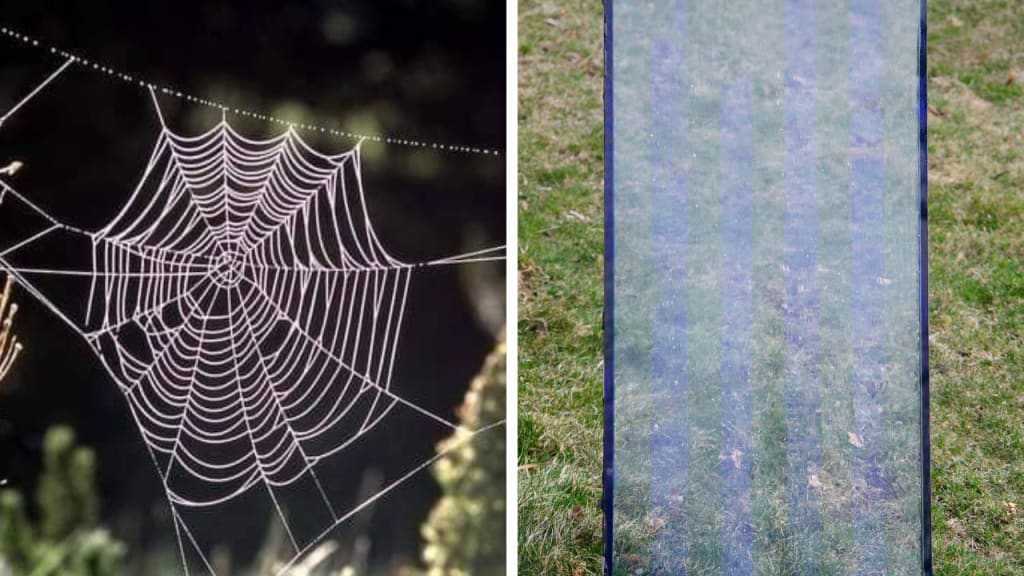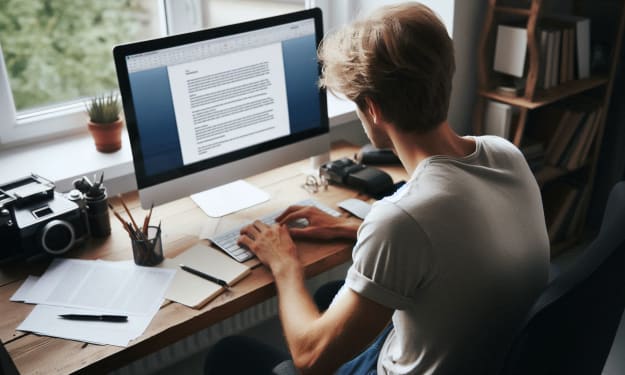Biomimicry In Action: Integrating Nature-Inspired Design For Product Life Cycle Optimization
Cognitud, a global consulting firm, collaborates with leaders on strategy, net-zero innovation, and capacity building to pursue a sustainable & thriving future.

Nature has been a visionary inspiration for humans for many centuries. It has rightfully inspired mortal society to look and think beyond the existing way of living. There have been countless innovators who found their muse in a specific species or surroundings and brought it to reality by means of innovation across products, inventions, industries, and services.
Interestingly, the famous painter Leonardo Da Vinci was heavily inspired by the concept of biomimicry as he dove deep into the study of birds with the hope of developing something that enables human beings to fly. Though he failed to succeed in his goal of creating a flying machine, his idea lived on for years to come. Later, the Wright Brothers got the same idea as Da Vinci of creating a flying machine after observing the flight of pigeons. As luck would have it, the Wright Brothers managed to bring Da Vinci’s abortive goal to fruition and developed the first airplane in the world in the year 1903. History is testimony to the fact that when biomimicry and design team up, they result in some of the most marvelous innovations the world has seen.
What Is Biomimicry?
Now, let’s understand what biomimicry, also known as biomimetics or biomimetism, really is. Derived from the Greek terms ‘bios’ meaning life and ‘mimesis’ meaning imitation, biomimicry relates to the ability to mimic Mother Nature or biological entities to come up with innovative designs and solutions. For instance, modern office settings have taken inspiration from beehives. The way bees come back to their hives to transfer information to their peers about the location of flowers, in the same manner, organizations can build such an official hive where their employees can develop and share innovative concepts.
The word biomimicry was made popular by author and scientist Janine Beyuns in her book “Biomimicry: Innovation Inspired by Nature,” which was published back in 1982. The term biomimetics is also used in place of biomimicry or biomimetism. The term was coined by American inventor and academic Otto Schmitt, which means shifting ideas from biology to technology.
Principles Of Biomimicry
To understand the concept of biomimicry on a deeper level, it is necessary to learn about the three principles on which the foundational base of biomimicry is built. These principles are explained thoroughly below:
Emulate – Herein, the developers or designers deeply observe nature to understand its strategies, processes, and forms. Later, they apply the knowledge gained to the development of innovative human-made solutions. Since nature has experienced millions of years of trial and error before achieving resilience and efficacy in its naturally-made designs, developers can mimic these to apply nature-inspired solutions to deal with human challenges.
Ethos – This lays emphasis on the developer’s or designer’s moral responsibility to give precedence to curative approaches, sustainability, and the welfare of both humans and the biosphere. Biomimicry enthuses designers to look at the far-reaching consequences of their innovations, primarily on society, the environment, and generations to come.
Reconnect – Biomimicry is a way to reconnect with nature, from which people have knowingly or unknowingly distanced themselves due to a deep inclination toward a digitally-focused and industrializing world. Here, developers engage with the natural world to learn from its systems and processes and develop a sense of respect for the natural surroundings. This allows the designers to understand the intricate net of life well enough and then design solutions that act in a concerted manner with nature.
Advantages Of Biomimicry
The first and foremost benefit that we humans can have from biomimicry is that it aids in creating mostly sustainable and environmentally friendly designs or products. Biomimicry tells us how nature manages to solve issues that act as a hindrance to its own evolution and how we, as humans, can come up with likewise solutions to our own problems. Basically, biomimicry design shows us how to be sustainable, as the developments made through biomimicry are more sustainable, strong, and effective. All in all, the result of designing a product through biomimicry is considered far better than the one that is made by unnatural means. Fermanian Business & Economic Institute recently presented a report that demonstrated growing activity in the biomimicry domain. It was predicted that nature mimicking innovation could be responsible for around 425 billion dollars (valued in 2013) of the US GDP by the year 2030.
Examples Of Biomimicry
Providing instances from the real world that explain biomimicry is uncountable. However, below are some of the most common examples of biomimicry that you use in your daily lives.
Bur Seeds – Velcro
George de Mestral is the man behind creating Velcro for which he got inspiration from the Bur seeds of the Burdock plant. Regarded amongst the topmost biomimicry examples, Velcro is a product that every human must have seen and used in their life, as it is widely used in bags, shoes, and more.
Kingfisher – Bullet Train
When the bullet train in Japan was making people’s heads turn in its initial phase, it also disturbed residents living nearby due to its production of a loud boom while exiting tunnels. Since the lead designer, Eiji Nakatsu, was an enthusiastic bird watcher, he came up with a nature-inspired solution to the problem. He observed how a kingfisher travels from air to water to catch its prey without making any sort of noise. This drove him to modify the front of the bullet train in such a way that it looks just like the beak of a kingfisher. This enabled the train to move out of the tunnel without producing a loud boom.
Spider Webs – Bird Protection Glass
Nobody wants a bird to come crashing into a glass wall, but it used to happen more often than not earlier since birds could not make out if there was glass in front of them. To avoid such situations from happening anymore, Arnold Glas created Bird Protection Glass after taking inspiration from spider webs. He noticed how the spiders integrate UV-reflective silk strands in their webs to keep the birds from sticking to their cobwebs. With this in mind, he invented Bird Protection Glass, which contains a UV-reflective layer that helps the birds detect the glass and divert their route.
What Does The Future Hold?
Biomimicry embraces a broad spectrum of industries, comprising agriculture, architecture, engineering, transportation, medicine, and a lot more. In this world that is surrounded by so many climate issues, biomimicry turns out to be a glimmer of hope. Nature’s magnificence and versatility bestow on humans a fountain of inspiration to create sustainable designs. With the advancement of technology, human’s ability to get into the nitty-gritty of nature’s designs will positively yield countless sustainable solutions. Businesses can contribute to a greener environment if they consider nature-inspired solutions for human-centric problems. Developments in biomimicry could result in the innovation of self-healing structures inspired by spider silk or super-strong and lightweight materials inspired by bones. In energy production, biomimicry could result in more effective solar cells imitating wind turbines or photosynthesis inspired by whale fins.
What Is The Role Of Sustainability Advisors, And How Can They Be Of Help?
As the term suggests, sustainability advisors or consultants design and implement practices that are sustainably oriented. They study a company’s operations and determine in which sections sustainability must be implemented or enhanced. Their responsibility includes assessing supply chain logistics, waste management processes, energy consumption, and a lot more. After an in-depth consideration, the sustainability advisors come up with solutions on how to mitigate the negative environmental effects produced by the company while simultaneously helping them make more profits than ever. From circular economy to biomimicry, these consultants have all the knowledge under their belt, which is enough for your business to walk on a sustainable path while experiencing increased efficiency and cost savings.
For more Information visit us at https://cognitud.com/insights/
About the Creator
Cognitud
Cognitud is a global consulting firm. We collaborate with leaders on strategy, net-zero innovation, and capacity building in the pursuit of a sustainable, inclusive, and thriving future. Visit us at https://cognitud.com/
Enjoyed the story? Support the Creator.
Subscribe for free to receive all their stories in your feed. You could also pledge your support or give them a one-off tip, letting them know you appreciate their work.






Comments
There are no comments for this story
Be the first to respond and start the conversation.